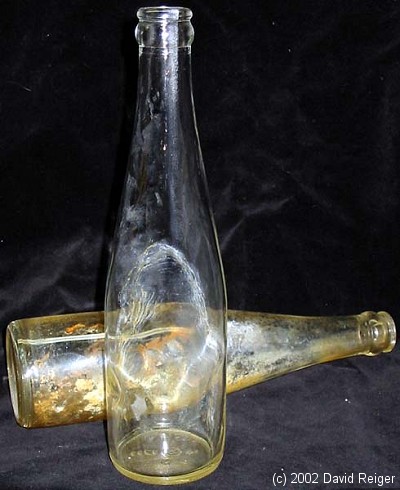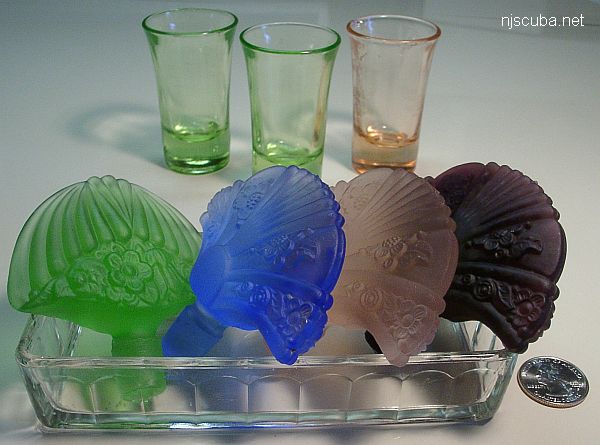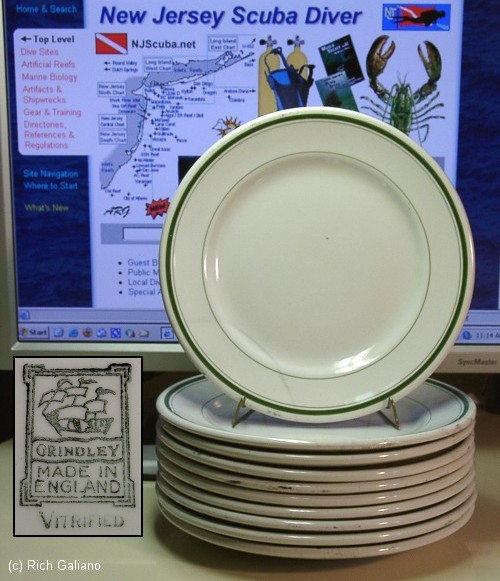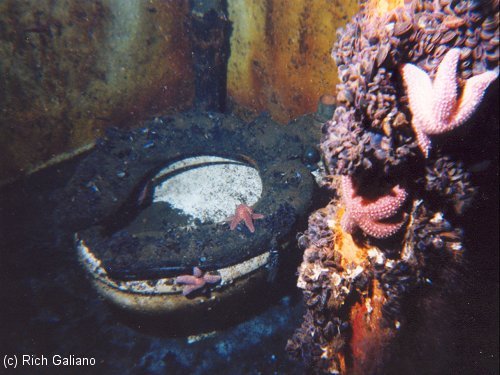Glass & Ceramics

Glass is a hard substance, usually brittle and transparent, composed chiefly of silicates and an alkali fused at high temperature.
Composition and Properties of Glass
Most glass is a mixture of silica obtained from beds of fine sand or from pulverized sandstone; an alkali to lower the melting point, usually a form of soda or, for finer glass, potash; lime as a stabilizer; and cullet ( waste glass ) to assist in melting the mixture. The properties of glass are varied by adding other substances, commonly in the form of oxides, e.g., lead, for brilliance and weight; boron, for thermal and electrical resistance; barium, to increase the refractive index, as in optical glass; cerium, to absorb infrared rays; metallic oxides, to impart color; and manganese, for decolorizing.
The term "crystal glass, " derived from rock crystal, was at first applied to clear, highly refractive glass; it has come to denote in the trade a high-grade, colorless glass and is sometimes applied to any fine hand-blown glass.
The Process of Glassmaking
The processes of glassmaking have remained essentially the same since ancient times. The materials are fused at high temperatures in seasoned fireclay containers, boiled down, skimmed, and cooled several hundred degrees; then the molten glass ( called metal ) is ladled or poured into molds and pressed, or is blown ( sometimes into molds, ) or is drawn. The shaped glass is annealed to relieve stresses caused by manipulation, then is slowly cooled. The glass, formerly annealed on shelves in a melting furnace, is now usually carried on rollers through annealing ovens ( lehrs. )
Although today most hollow vessels such as light bulbs or containers are machine-blown, fine ornamental hollowware is still made by gathering a mass of glass at the end of a long, iron blowpipe, blowing it into a pear-shaped bulb, which is rolled on an oiled slab ( marver ), shaped with tools, and then re-blown, often into a mold; the glass is reheated periodically in a small furnace ( glory hole. ) It is finally transferred to an iron rod ( punty ) attached to the base of the vessel, and the lip is shaped and smoothed. Methods of decoration include cutting, copper-wheel engraving, etching with hydrofluoric acid, enameling, gilding, and painting.
Development of the Glass Industry
Humans have used glass since prehistoric times, at first fashioning small objects from natural glass such as obsidian, a volcanic glass, or from rock crystal, a colorless, transparent quartz whose brilliance and clarity are emulated in manufactured glass.
Ancient Glassmaking
The place and date of origin of manufactured glass are not known. The oldest known specimens of glass are from Egypt ( c.2000 BC ), where the industry was well-established c.1500 BC. Many varieties of glass were known during Roman times, including cameo glass, such as the Portland Vase, and millefiore glass, produced from fused and molded bundles of thin glass rods of many colors. Glass was also used for window panes, mirrors, prisms, and magnifying glasses. Except for the work done in Constantinople, little is now known of the methods of glassmaking used in Europe from the fall of Rome until the 10th cent., when stained glass came into use.
Early European Glassmaking
Venice was the leader in making fine glassware for almost four centuries after the Crusades and attempted to monopolize the industry by strict control at Murano of glassworkers, who were severely penalized for betraying the secrets of the art. After the invention ( c.1688 ) of a process for casting glass, France was for many years supreme in the manufacture of plate glass such as that used to line the Galerie des Glaces at Versailles. Late in the 17th cent. England began to make flint glass, whose lead oxide content imparted a brilliance and softness that made it suitable for cut glass.
Glassmaking in Colonial America
The first glass factory in America was built in 1608, and glass was carried in the first cargo exported to England. Although other glasshouses were operated in the colonies, especially in New Amsterdam, the first successful and enduring large-scale glasshouse was set up by the German-born manufacturer Caspar Wistar in New Jersey in 1739. Some of the finest colonial glassware was produced in the Pennsylvania glasshouses of the German-born manufacturer H. W. Stiegel.

Beginnings of the Modern Era
The invention of the glass-pressing machine ( c.1827 ) used by the American manufacturer Deming Jarves in his Boston and Sandwich Glass Company ( 1825-88 ) permitted the manufacturing of inexpensive and mass-produced glass articles. Nevertheless, in the 19th and 20th cent., there has remained a sense of pride in individual craftsmanship. The American artist Louis C. Tiffany was responsible for the design and manufacture of an extraordinary iridescent glass used in a variety of objects in the late 1800s. Exceptionally fine blown glassware has been designed by such artists as Rene Lalique and Maurice Marinot in France, Edvard Hald and Simon Gate in Sweden, as well as Sidney Waugh in the United States.
Contemporary Applications of Glass
Glass has become invaluable in modern architecture, illumination, electrical transmission, instruments for scientific research, optical instruments, household utensils, and even fabrics. New forms of glass, new applications, and new methods of production have revolutionized the industry. Recently developed forms of glass include safety glass, which is usually constructed of two pieces of plate glass bonded together with a plastic that prevents the glass from shattering when broken; fiberglass, which is made from molten glass formed into continuous filaments and used for fabrics or for electrical insulation; and foam glass, which is made by trapping gas bubbles in glass to yield a spongy material for insulating purposes. Certain uses of glass are now being superseded by newly developed plastics.
Porcelain

Porcelain [ Ital. porcellana ] is a white, hard, permanent, nonporous pottery having translucence which is resonant when struck. Porcelain was first made by the Chinese to withstand the great heat generated in certain parts of their kilns. The two natural substances used were kaolin, also known as china clay, a white clay free of impurities that melts only at very high temperature, and a feldspar mineral called petuntse that forms a glassy cement, binding the vessel permanently.
Although proto-porcelain wares exist dating from the Shang, by the Eastern Han high firing glazed ceramic wares had developed into porcelain, and porcelain manufactured during the Tang period ( 618-906 ) was exported to the Islamic world where it was highly prized. The ware was refined during the Sung period ( 960-1279. ) During the Yuan period ( 1280-1368 ) blue and white ware was produced by utilizing cobalt blue from the Middle East. The Ming period ( 1368-1644 ) developed this blue and white ware but used other colors as well. The Ching period ( 1644-1912 ) designed porcelain especially for export often utilizing Western designs.
In Europe porcelain was first commercially produced ( 1710 ) in Meissen, Germany. Most of the European porcelain is soft paste ( made from clay and an artificial compound such as ground glass ) and is not as strong as the Chinese hard-paste porcelain. Important European centers for porcelain are Bow, Chelsea, Worcester, Staffordshire, Vienna, Meissen, Savres, Limoges, and Rouen.

compiled from various sources
